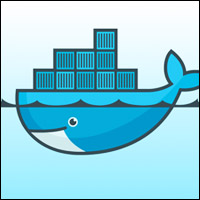There have been many changes in the market and technology since Citrix acquired XenSource and a major stewardship stake in the Xen open source hypervisor four years ago.
Red Hat’s 2008 Qumranet acquisition and subsequent push behind the Linux-integrated Kernel-based Virtual Machine (KVM) hypervisor has added to the disruption. One thing, though, remains the same: the intense competition among these open source hypervisors in the enterprise market.
Hypervisors have maintained their relevance in the market thanks mainly to their significance to server and datacenter virtualization and cloud computing. Given open source software’s significance to cloud computing, open source hypervisor players KVM and Xen are particularly relevant.
They also contribute to the trend toward more choices, openness and empowerment for customers in cloud computing.
The KVM-Xen Duel
The latest developments with KVM and Xen center on additional vendor support and community growth for both. For contextual purposes, Xen is ahead in market deployment and use, and it is the foundation for many public, private and hybrid cloud architectures and plans.
While not as widely deployed, KVM is gaining in enterprise scalability and credibility, and it benefits from its integration into the Linux kernel, which affords performance and other pluses.
KVM has been bolstered by the recently announced Open Virtualization Alliance, a consortium of software and hardware vendors intent on educating and encouraging adoption. The group is led by governing members Red Hat, HP, IBM and Intel. Additional members include BMC Software, Eucalyptus Systems and SUSE.
We saw Red Hat’s most aggressive promotion of KVM last year with the rollout of Red Hat Enterprise Linux 6. This of course builds on Red Hat’s September 2008 acquisition of Qumranet, the originator and sponsor of KVM, for US$108 million.
As for Xen, the open source hypervisor recently figured importantly in Citrix’s announcements at its Synergy conference, which included Project Olympus, a Citrix-certified version of the OpenStack open source cloud computing stack, backed primarily by Rackspace. Xen continues to be a prominent part of the Citrix cloud story. Project Olympus is currently out in preview and is set for general availability by the end of the year.
Similar to Red Hat with KVM, Citrix has built much of its cloud computing technology and offerings around XenSource server and Xen hypervisor, which Citrix got with its August 2007 acquisition of XenSource for $500 million. Since then, we have seen more support for Xen with Linux, in addition to Windows, and the Xen open source community than we might have expected.
Citrix is not the only believer in Xen, as Oracle also bases its OracleVM virtual machine technology on the open source hypervisor. Xen also stands to benefit from upcoming inclusion in the mainline Linux kernel, which is sure to intensify the KVM-Xencompetition.
A smaller vendor that may stand to gain from the increased backing and growth of both KVM and Xen is Convirture, which is also significant in enterprise virtualization and cloud computing given its partnerships with Ubuntu distributor Canonical, Red Hat and Eucalyptus Systems.
Beyond Open Source
The non-open source hypervisors are also factors in this fight, given increasing competition between KVM backer Red Hat and virtualization goliath VMware, which backs its own ESX hypervisor.
Microsoft’s Hyper-V is another example of how interoperability demands of customers requires support for non-open source hypervisors alongside open source options.
Looking ahead, I believe we get a sense of the hypervisor support that will be demanded of providers when we consider OpenStack. The open source cloud computing software stack — now backed by commercal support from Rackspace, the Olympus-certified stack from Citrix and other partnerships including Dell, Equinix and Internap — supports all of the major enterprise hypervisors: ESX, Hyper-V, KVM and Xen.
This is another another example of the trend toward openness in cloud computing. Customers are demanding open source characteristics such as flexibility, customization, cost and time efficiency, and scalabilty, while vendors are doing their best to deliver it — often based on support for open source components, languages, frameworks, databases and, most pertinent here, hypervisors.








































